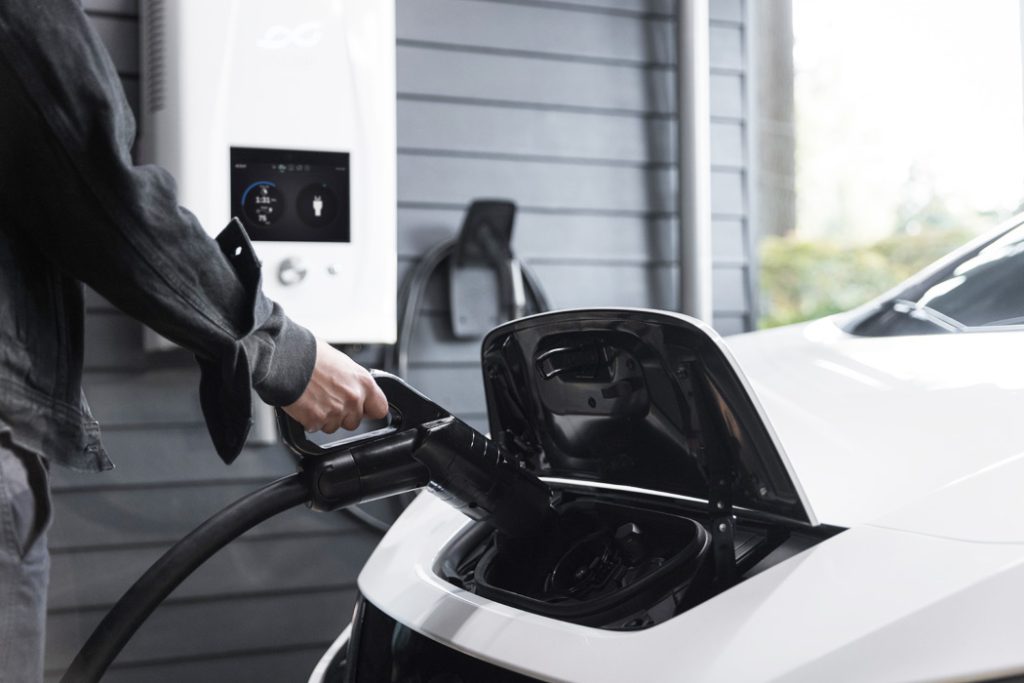
In recent years, numerous studies have demonstrated the environmental advantages of electric vehicles (EVs) over their gas-powered counterparts. A study published last year1 from the University of Michigan found that, compared to internal-combustion engine vehicles, common EV models in the U.S. generate nearly 64 percent less greenhouse gas on average. While EVs have a greater up-front environmental footprint due to battery production, the study found that on-the-road energy savings make up the difference after 1 to 2 years of usage. These findings also held true in 98 to 99 percent of U.S. counties, despite regional differences in electrical grid decarbonization.
While strong evidence suggests that electric vehicles are more environmentally friendly than gas-powered ones, battery production and recycling pose issues that should not be ignored. The mining of metals like nickel, lithium, and cobalt for EV batteries can often entail the degradation of vital ecosystems, unethical labor practices, and the disruption of indigenous peoples.2 New federal laws are responding to ethical and environmental concerns by discouraging reliance on unethically mined metals. Starting this year, the 2022 Inflation Reduction Act and the 2021 Infrastructure Investment and Jobs Act offer tax credits to EV buyers, contingent on the battery meeting various material sourcing standards.3 This is also leading producers to rethink battery design and make greater use of recycled metals from old EV batteries.
From Furnaces to Microbes
The recyclability of EV batteries is improving. A common method of extracting metals from old batteries, called pyrometallurgy, is an energy-intensive process of shredding materials and smelting them in furnaces to extract important metals. Recently, a new recycling method called hydrometallurgy is becoming common. It uses acids to separate the materials, demanding less energy and allowing the recovery of additional nonmetal materials in the process.4 Recent developments in bioleaching (the use of microbes to break up metals) show even greater promise for recycling EV batteries in a low-cost and environmentally friendly way.5 Efficient recycling methods decrease the need to mine since more use is gained from metals already in circulation.
A New Use for Old Batteries
Readers may recall from last month’s edition the risks of relying too heavily on recyclability. Luckily, there are attempts to design EV batteries for reuse in other contexts. In the future, old EV batteries that are no longer suitable for the road might be repurposed for the electrical grid. This does pose some challenges, since EV batteries are designed for a different use, but organizations like the National Renewable Energy Laboratory (NREL) are actively researching how to design EV batteries for the job.
But why wait until the battery is out of the vehicle? “Vehicle-to-grid” is one promising technology under development that could harness an EV battery for grid electricity storage while the vehicle is still in use. This could allow EVs to charge with electricity generated in excess (likely from renewables at a time of low electricity demand), and then offload some of that electricity back onto the grid at a later time. A bidirectional battery design like this entails substantial engineering challenges, but someday in the near future it could become viable.
Down the Road
Overall, electric vehicles outperform gas-powered ones from an environmental perspective, but the impact of battery production should not be ignored. With the proper incentives, further progress can be made to design EV batteries efficiently, improving their reuse and recyclability. If these considerations are addressed, electric vehicles could play a significant role in the move towards a green economy.
1Maxwell Woody, et al, 2022, The role of pickup truck electrification in the decarbonization of light-duty vehicles, Environ. Res. Lett.
2Fred Pearce 2022, Why the Rush to Mine Lithium Could Dry Up the High Andes, Yale Environment 360
3Judith L. Mernit 2022, For U.S. Companies, the Race for the New EV Battery Is On, Yale Environment 360
4The Economist 2021, Old electric cars are a raw material of the future
5Feng Zhao, Shuhua Wang, 2019, Chapter 7, Bioleaching of Electronic Waste Using Extreme Acidophiles, Electronic Waste Management and Treatment Technology
